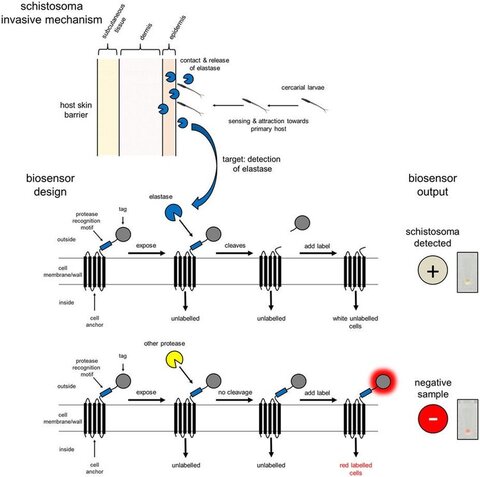Developing new biotechnologies for detecting schistosomiasis parasites in water
WISER: Water Infrastructure for Schistosomiasis-Endemic Regions is a research collaboration that is bringing together water engineers, biologists, parasitologists and social scientists from UK, Ethiopia and Tanzania to design sustainable water infrastructure solutions for schistosomiasis-endemic regions. Imperial College's Dr Alexander Webb, discusses some of the new technologies that might help in identifying and targetting these parasites.
Access to a reliable source of clean water is a luxury many people and animals lack in the world. Parasites are a major water contaminant and are a concern in all parts of the globe. There is, therefore, an urgent need to research parasites and to discover new biotechnologies that can help us to detect and remove water-borne parasites so that we can improve access to safe drinking water for as many people as possible.

In this WISER project, we are aiming to develop new technologies for detecting Schistosomes so that we can assess the efficacy of our new water treatment processes. The difficulty with dealing with this family of parasites lies in their life cycle. As part of its life cycle, Schistosomal eggs are released into watercourses via the urine or faeces of infected people/animals. The eggs hatch and release the Miracidial larvae, which then go on to infect the intermediate host - freshwater snails. These infected snails act as the reservoir for the larval stage (Cercarial larvae) that infects humans and other animals. The larvae infect humans and other animals via contact with their dermis (skin), which stimulates the release of proteases (protein-based enzymes that cut up other proteins) that enable the larvae to penetrate the host.
It is this part of the lifecycle that we are trying to detect. One of these released proteases, called elastase, is known to act upon the dermis and weaken it so that the larvae can enter the host’s body. We have therefore developed a range of bioreporters (also known as biosensors) that can detect and report (through colour change) the presence of this elastase enzyme – thus detecting schistosomes. Of course, we are continually aiming to improve our bioreporter designs to improve the specificity and/or sensitivity of detection. Since our bioreporter designs are modular, we can rapidly change and improve upon our existing bioreporter designs. For instance, we can change the output of the bioreporter such that a positive output, in that the presence of the parasite in the water has been confirmed, could result in a fluorescent signal or the enzymatic production of a coloured compound that is visible to the naked eye. The picture to the right, describes how our published prototype bioreporters, which are localised on the surface of bacterial cells, work.
With the continued development of faster, more specific, and even more sensitive bioreporter designs, we hope that in conjunction with the rest of the WISER team, we will be able to develop new strategies to provide reliable sources of clean water free from parasite contamination.
This article has been adapted from an original article which can be accessed at www.wiserschisto.com/blog
Further Resources
- WISER: Water Infrastructure for Schistosomiasis-Endemic Regions
- Webb A, et al (2016) A protease-based biosensor for the detection of schistosome cercariae. Scientific Reports 6:24725